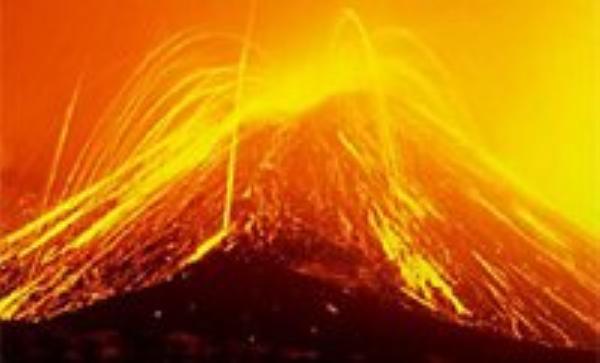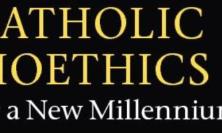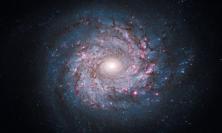When you hear of a natural disaster that claims thousands of victims, you can hardly be blamed for asking why. Could an all-powerful God not have created a world without such violence, death and suffering? Jesuit astronomer, Guy Consolmagno, explores our ambivalent relationship with nature-in-the-raw in the third of his series for Thinking Faith.
Scientists are intimately familiar with the physical universe. But we know it well enough to see beyond romantic visions of butterflies and postcard sunsets. It is also a violent place. Indeed, the very atoms in our bodies were fused together at unthinkable energies inside of stars or formed in the cosmic explosion of a supernova.
Couldn’t God have designed a gentler universe?
The universe is full of galaxies; galaxies are full of stars; massive stars burn faster than small stars, and when their insides are consumed they collapse; the collapse rebounds into an explosion called a supernova, and spewed out into space we get all the heavy metals and other materials that were made inside the star during its lifetime of nuclear burning, and along with them all other heavy elements suddenly made during the explosion. The leftover gas and dust re-accumulates; other nearby explosions trigger a collapse in that gas; small disks of gas break off; and eventually we get new stars and planets.
And people.
Now, consider the remnant of a supernova explosion. It’s a striking, breath-taking image. It is the source of raw materials that may some day be built into planets, including some planets (at least one planet that we know of) with rational, thinking, God-fearing animals crawling on the surfaces. But that same supernova is, in the meantime, also a scene of tremendous destruction.
Is a supernova explosion a natural disaster? I guess it is, if you are in the way -- as immortalized in the late Arthur C. Clarke’s story, The Star. Is a supernova a disaster if no one gets hurt? Is a supernova beautiful, if no one sees it? Does a supernova have a reason to occur, if none of its nucleosynthesized atoms ever find their way into a living creature?
Does everything, and I mean everything, have a “purpose”? And what is the purpose of purpose? Why does the universe exist? Why is there something instead of nothing?
Those are philosophers’ questions. I can’t answer those. But you’d better be prepared to deal with those kinds of questions if you are insisting on finding meaning in disasters.
Not me, I’m not a philosopher.
I’m not a people person. Every time I remember the name of a person, I forget the name of a meteorite. Unlike many of my fellow Jesuits, my life is not focused on education, or parishes, or care for the suffering and homeless and the sick, or advancing the wisdom of literature and philosophy or promoting the communication of human ideas and ideals through speech or music or dance. Most people, I suspect, in one way or other spend their life on the “proper study of humankind” which, we are told, is human beings. But I don’t. I’m not a philosopher. I am an astronomer.
My job immerses me, day to day, in nature and how it works.
There’s an odd divide in Western culture nowadays. We’ve become separated from nature. We have air-conditioned homes, air-conditioned cars, air-conditioned offices, air-conditioned lives. We spend most of our lives wrapped in cotton wool. If we feel pain, we want it to stop, now.
Well-lit streets at night that mean that most people never see the Milky Way—or at least not until the lights go out. After the Northridge earthquake in southern California in January 1994, the phones at the Griffith Planetarium in Los Angeles started ringing off the hooks as people wanted to know why the earthquake made the sky look so scary. The earthquake struck at 4:30 a.m., while it was still dark outside. When people rushed through their blacked-out homes to the outdoors, a million people saw something in the skies over Los Angeles they’d never seen before: stars. And they were terrified.
In the last hundred years, for the first time in human history, our entire population in the West, rich and poor alike, has been able to stay up after dark as a matter of course. The night holds no more terrors for us; the wolf is far from our doors—until the lights go out.
I spent two years in the Peace Corps in Africa.I saw there how we used to live, back before flush toilets and neon lights. People lived close to nature, in a way that hardly anyone in America does anymore. And I learned in Africa that there’s a word for people who live close to nature: starving.
Our lifestyle puts a heavy toll on the environment; but so does the lifestyle of the desperate people in Kenya or Haiti, who strip the forests bare in their day-to-day struggle to stay alive. So I don’t necessarily mean to disparage our cotton-swabbed existence. My point is just to point it out, because the shock we experience when a natural disaster hits us is precisely the wrench of being jerked out of our cotton-wool womb and forced to confront nature. Nature can be hostile as well as beautiful; nature gives us food and gives us death.
The people in Africa, God help them, are used to living with pain and death. It is very close to the surface there. And I experienced God very close to the surface there, too. Atheism is a luxury of the well-to-do; it goes hand in hand with flush toilets.
But I like flush toilets, they are a great idea until the storm comes and they no longer work. The glory of technology is based on the glory of science; and the glory of science is that it works. Its laws are simple, you can calculate and predict outcomes with them, you can test your predictions against results, and you can use them to invent the gizmos that make our life simpler, easier, more reliable, more pain-free.
Newtonian physics assumes that the universe is predictable and orderly, and four hundred years of experimental science has given us confidence that the rules of cause and effect are very good at predicting how the universe works. But a funny thing happened along the way. Around 1960, the meteorologist Edward Lorenz at MIT noticed that his computer models for the weather would predict remarkably different results if he varied his starting conditions even very, very slightly. It opened up a new branch of mathematics called chaos theory.
We’ve learned that you tend to get essentially unpredictable changes, “chaos,” when you have a system subjected to two different forces that interfere with each other in a way that is not linear. Weather is the most obvious example, with nonlinear fluid dynamics equations being tweaked by all sorts of different forces, from the heat of the sun to the friction of the ground that the wind blows over. This classic case gives rise to the old cliché about the butterfly who disturbs the atmosphere in such a way as to affect the weather a thousand miles away.
Of course, not every butterfly hits the sweet spot. But even planetary orbits, whose regularity let Newton demonstrate his simple laws of gravity and motion, can become chaotic; when Saturn and Jupiter both pull on an asteroid just right (or just wrong), it can be sent into an orbit that hurtles it on a collision course with Earth. The result: a natural disaster. Goodbye, dinosaurs! And then the dinosaurs’ theologians ask, “Where was God?”
But there’s a joker in the natural world.
As an astronomer, when I get an image from a satellite looking down on a planet, I want a natural explanation for all the bits of information I see. Now imagine that I am an astronomer from a distant star, looking down on the night side of Earth, and I see the aurora borealis as charged particles from the sun are swept up by Earth’s magnetic field. But I also see pools of light further south: Chicago, Mexico City, Rio de Janeiro, and all the other places where people live and turn on their lights. The auroras I can explain as natural phenomena. The cities, however, are the action of intelligent creatures; the result of their decisions to live here and not there, decisions powered by history and economics and happenstance—and free will.
Now, watch me here; don’t jump ahead to a conclusion that I don’t think is correct. No, free will is not the same thing as the butterfly effect. No, free will is not due to the quantum uncertainty in the brain. No, you can’t look for the tiny gaps and cracks in Newtonian physics and try to stuff God or Man in there. For lots of reasons, philosophical and scientific, it doesn’t work.
I admit it’s tempting. Free will is something that Newtonian physics can’t handle. The quantum effect is something that Newtonian physics can’t handle. Therefore, free will is the same thing as quantum physics…? Ummm... the Sun is yellow; and a banana is yellow. Does that make the Sun a banana?
Mind you, free will – the same thing that gives us the ability to sin, and make all those terrible decisions that hurt us and the ones closest to us the most – is something I am sure exists; you can’t convince me otherwise, for to be convinced would mean that I would have to be free to change my mind, a contradiction. But then, if I can’t be convinced, does that mean that I am not really free? If nothing else, a paradox is a good sign that you’ve defined your question too narrowly. Free will acts in the universe, but it is something somehow a little more than of this universe. It has a touch of the supernatural to it. It’s one of the traits of the human soul.
And so here is the tension: there’s the world of nature, the world I study as a scientist, nice and neat and well described by some beautiful equations, elegant in their simplicity. And there’s the world of human beings, strange fleshy bundles of ego and free will, who can sometimes be described in a statistical sense but who as individuals never cease to surprise you. And yet human beings are a part of nature, with bodies that respond to the laws of biology and the laws of physics, capable of sinning and suffering and dying.
And those free-will-controlled bodies are inserted into the physical world of cause and effect, capable of acting at the sweet spot where the butterfly wing will have the biggest effect, and if we’re clever enough, we could even be capable of calculating where that sweet spot might be. We’re the joker in nature. The free will decisions of individual puny little human beings like you and me can affect the paths and the effects of hurricanes.
And if a human person can do it, so can God. So yes, God can act in a universe of cause and effect. If God can act, where is He?
Does God understand human suffering? Well, it’s not as if he himself had not also experienced betrayal and suffering and death.
My science doesn’t have an answer. Frankly, neither does my theology. I fall back on the words of another Jesuit, a keen observer of nature, who described it not in equations but in poetry.
In 1880, Gerard Manley Hopkins wrote:
MÁRGARÉT, áre you gríeving
Over Goldengrove unleaving?
Leáves, líke the things of man, you
With your fresh thoughts care for, can you?
Áh! ás the heart grows older
It will come to such sights colder
By and by, nor spare a sigh
Though worlds of wanwood leafmeal lie;
And yet you wíll weep and know why.
Now no matter, child, the name:
Sórrow’s spríngs áre the same.
Nor mouth had, no nor mind, expressed
What heart heard of, ghost guessed:
It ís the blight man was born for,
It is Margaret you mourn for.
(Spring and Fall: to a young child)
The horror we experience looking at natural disasters is the horror we feel at the death of any human being. And it is the blight we were born for.
But the fact that we do feel horror is itself an interesting data point. The human soul is the part of us that can be disturbed by the universe. Likewise, each human soul, capable of acting freely, is capable of disturbing the universe and capable also, I believe, of responding to an urge from (or towards) the transcendent to make that disturbing act.
Maybe we’re meant to be God’s butterflies. It may not be the only way that God acts or can act in nature. But manifestly, this is one way that God does act in the universe: through us, as his free agents.
Guy Consolmagno SJ is an American Jesuit working at the Vatican Observatory in Castel Gandolfo, Italy, where he conducts research on asteroids and comets, and serves as curator of the Vatican’s collection of meteorites. He is the author of several popular books on astronomy and religion.
This series of articles is adapted from talks given at the Jesuit Living Theology seminar held at Ushaw College from 25 - 29 March 2008. Included in these texts are extended quotations from the author's previously published material, notably from God’s Mechanics: How Scientists and Engineers Make Sense of Religion (Jossey-Bass, 2008); copyright and all rights reserved.
![]() The Vatican Observatory
The Vatican Observatory
![]() God's Mechanics: How Scientists and Engineers
God's Mechanics: How Scientists and Engineers
Make Sense of Religion by Guy Consolmagno SJ






